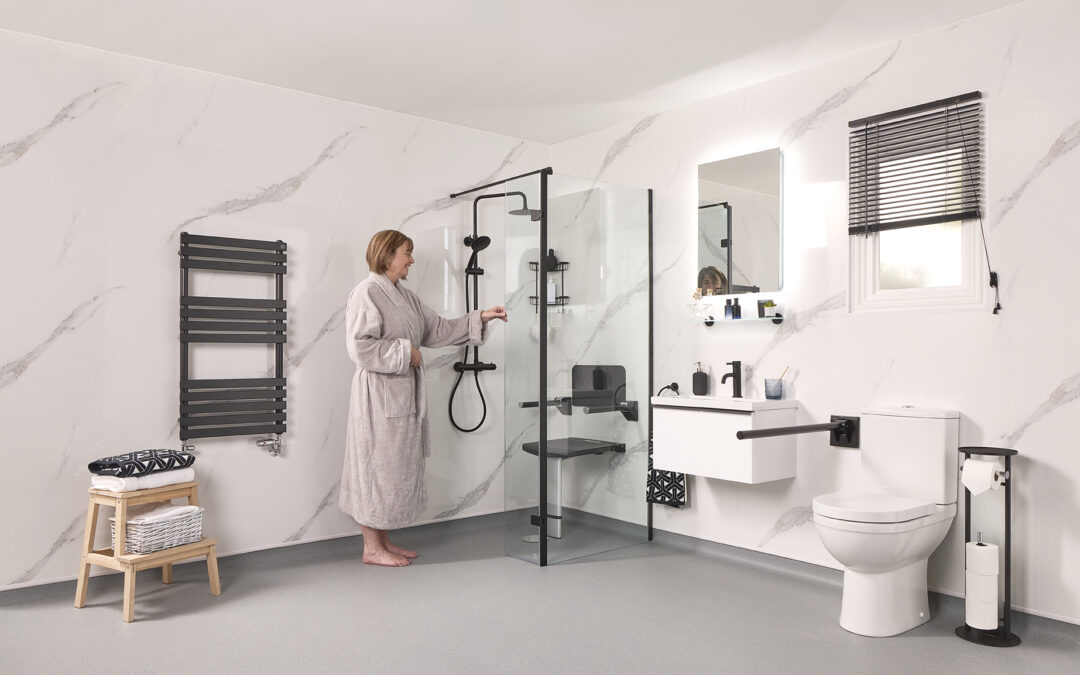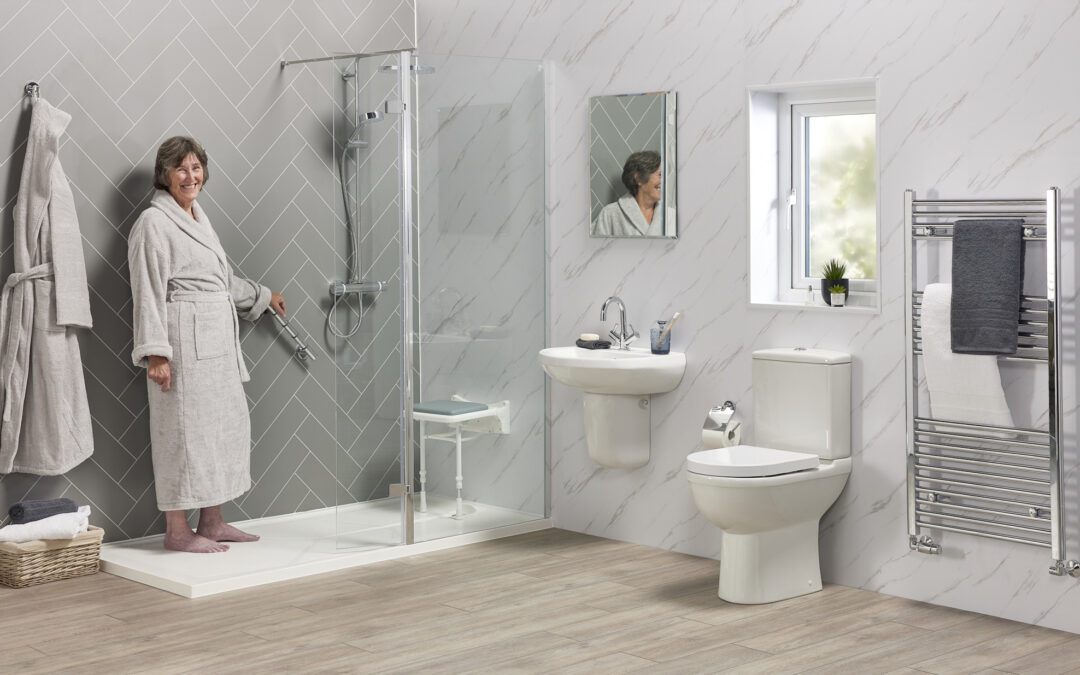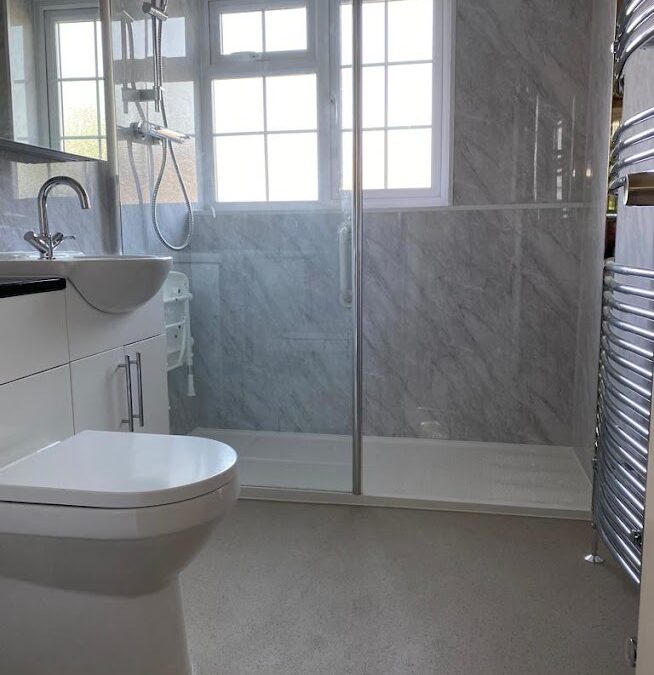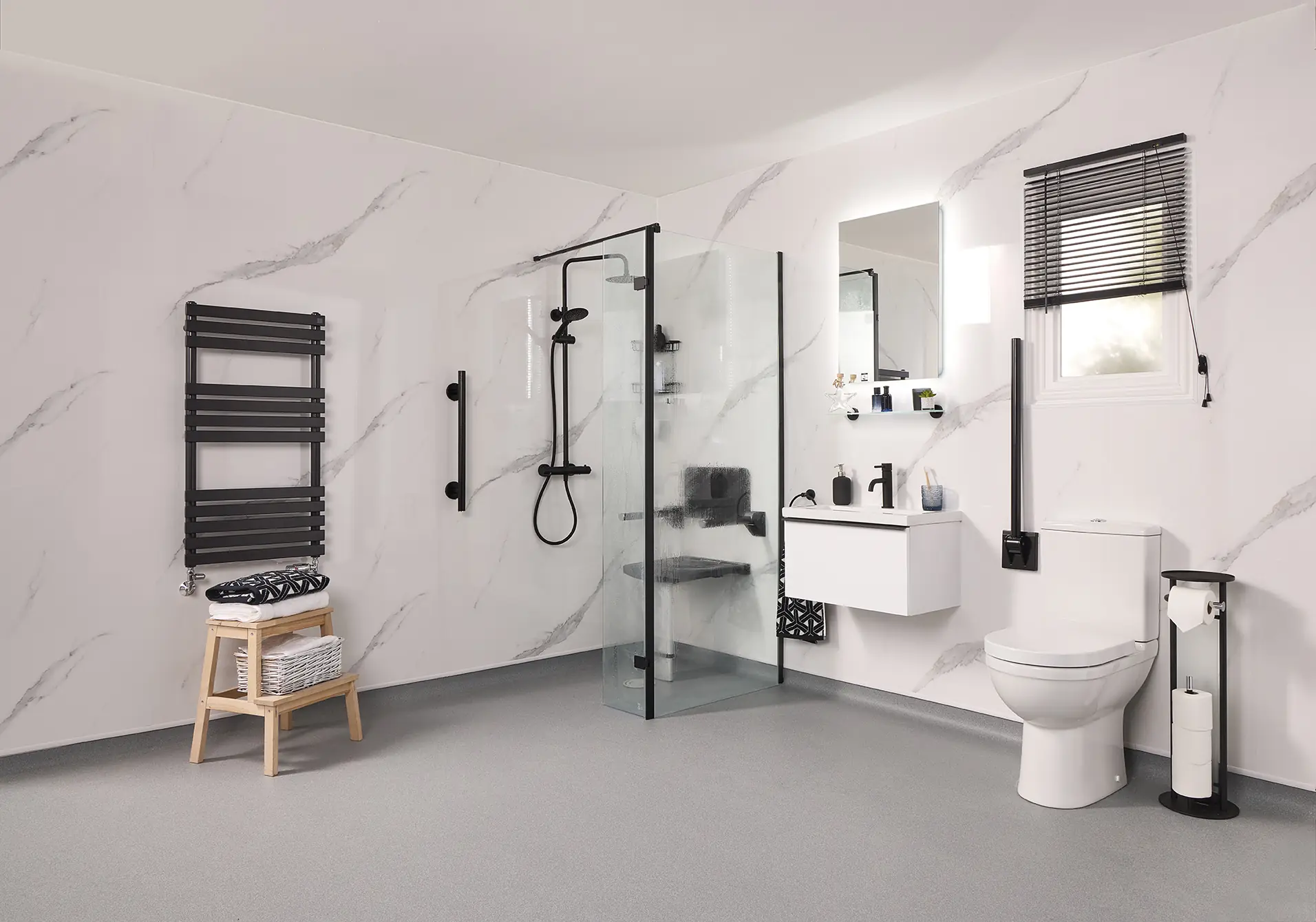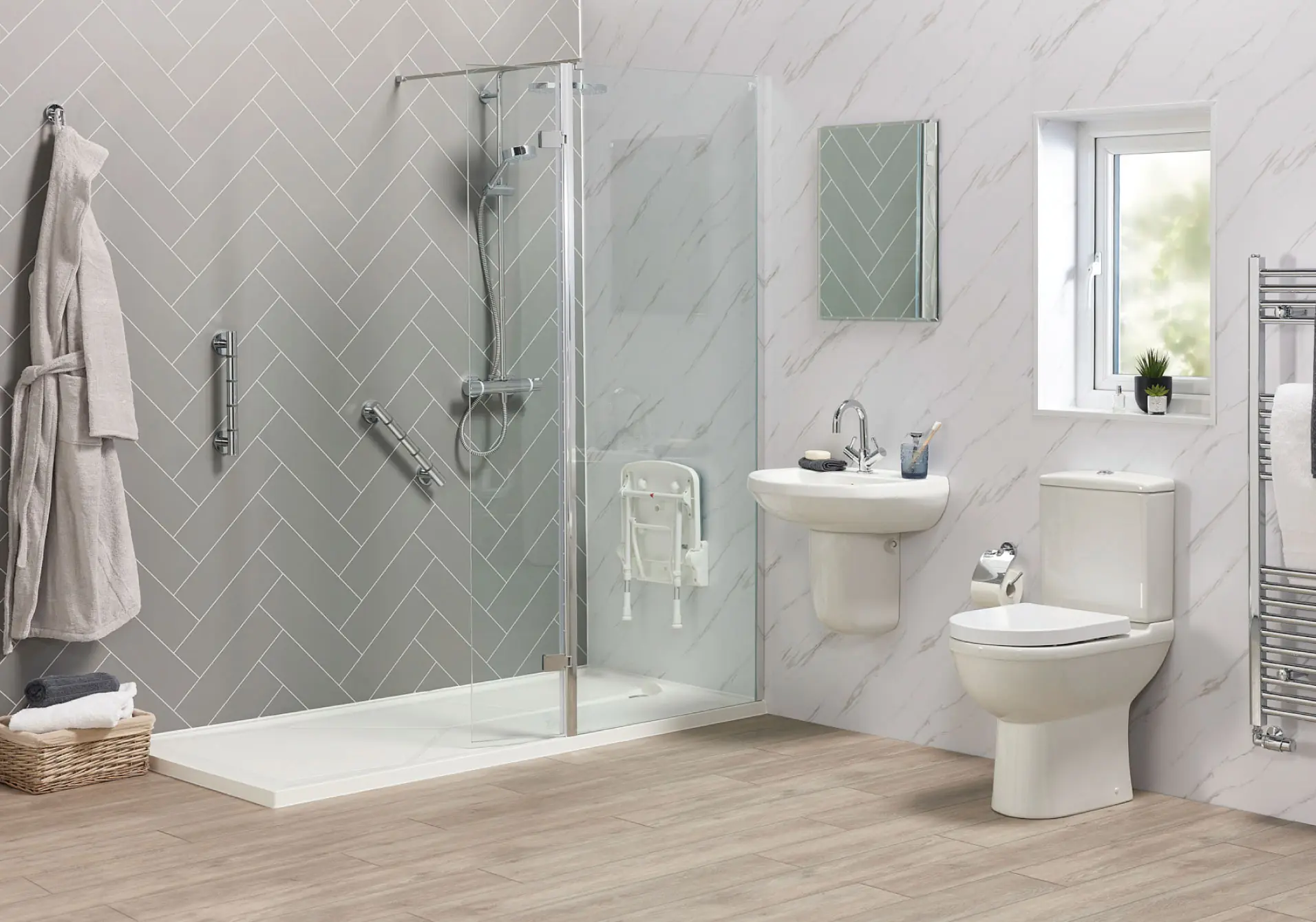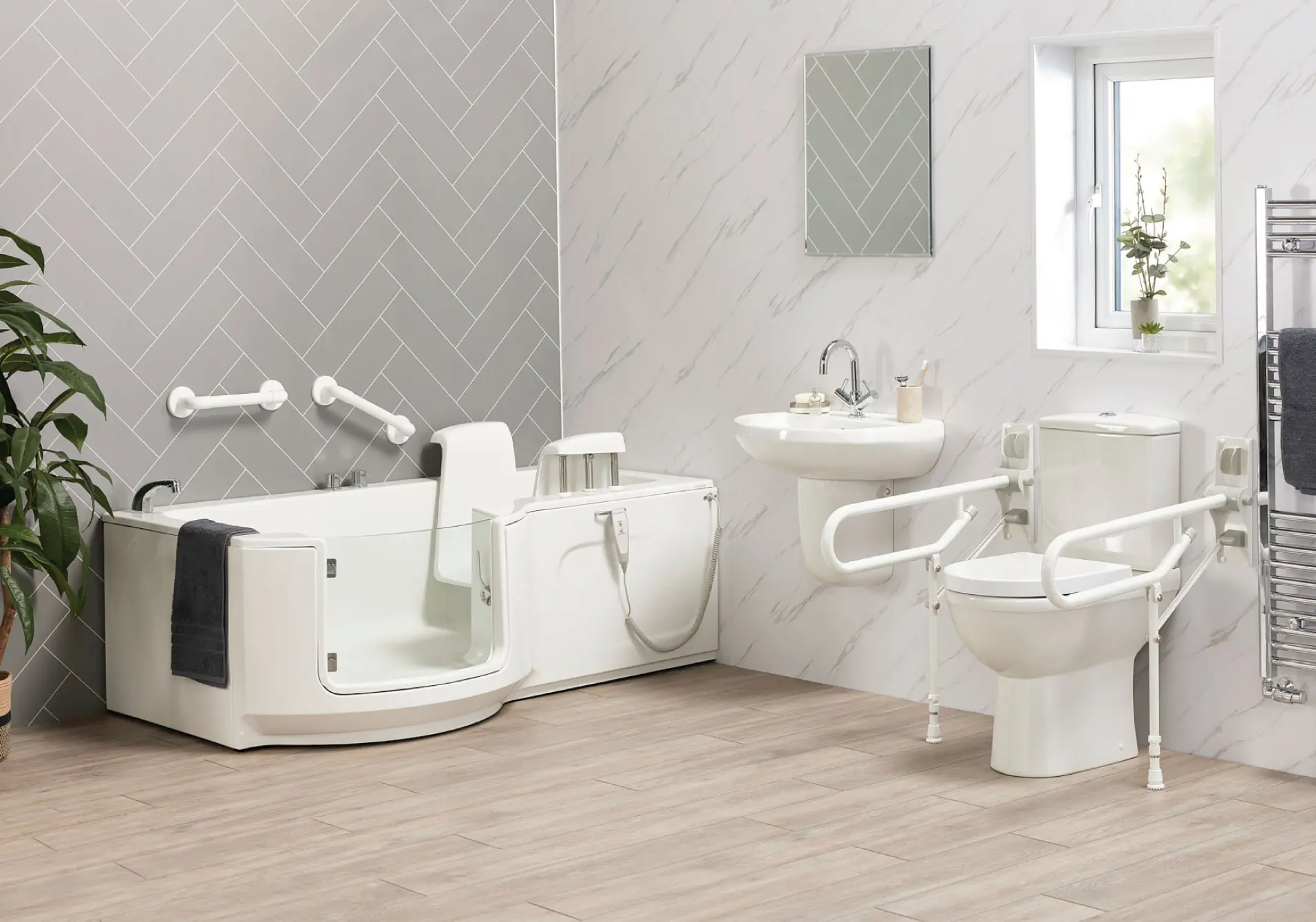According to the NHS, more than ten million people in the UK have arthritis or similar conditions affecting the joints with the hands, spine, knees and hips being the most common. And while we commonly associate the condition with older people, an estimated 15,000 sufferers are children and young people. The symptoms of arthritis include pain or tenderness, inflammation and restricted movement in and around the joints, but it also causes weakness and muscle wasting. This can make routine daily tasks extremely hard and painful, but there are ways in which you can reduce this. Let’s look at how changes in the bathroom can improve the quality of life for those living with arthritis, starting with the simplest objects.
Small gadgets that make big changes
Painful, stiff or weak joints in your hands can turn simple tasks such as holding a slippery bar of soap or squeezing a tube of toothpaste, shower gel or shampoo into major obstacles. Look for products that come in pump-action dispensers as these require less grip strength or dexterity. An even better option is to invest in commercial wall-mounted dispensers with an easy-to-use lever action or an automatic electrical sensor. Inexpensive plastic toothpaste tube squeezers are widely available from online suppliers and mobility aid shops. An electric toothbrush has a thicker handle than most manual toothbrushes and with the moving head requires much less effort on your part to properly clean your teeth. But as well as these smaller changes, look at how an adapted bathroom could help with arthritis. 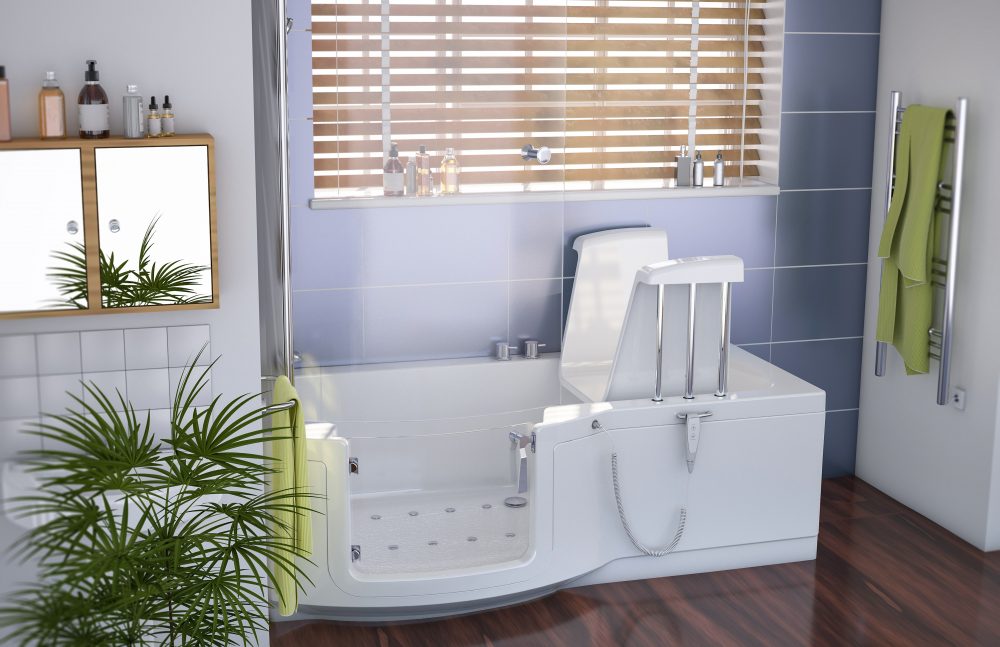

Adapting a bathroom for living with arthritis
How you choose to adapt your bathroom to help cope with the effects of arthritis is likely to depend on the level of your disability, the size and shape of your bathroom and the scale of your budget. While a full remodel that provides assisted bathing may be necessary if your arthritis is particularly severe, there are many ways in which you can improve your bathroom mobility without blowing the budget.
Taking a bath or shower
The choice between bathing and showering is intensely individual, with older generations possibly more accustomed to a bath than younger people who prefer a shower. Showering is certainly an easier option as you don’t need to get in and out of a bath, and a folding or fixed shower seat will allow you to take the weight off your knees, hips and spine while you wash. Easy lever shower valves are a boon for hands that are swollen and painful from arthritis, and a non-slip shower tray will help prevent nasty falls. If you prefer a bath, a long relaxing soak at the end of the day can help soothe the aching of stiff joints and prepare you for a comfortable night’s sleep, particularly if you add Epsom salts to the bath water – these contain magnesium which helps reduce the swelling and pain of arthritis. 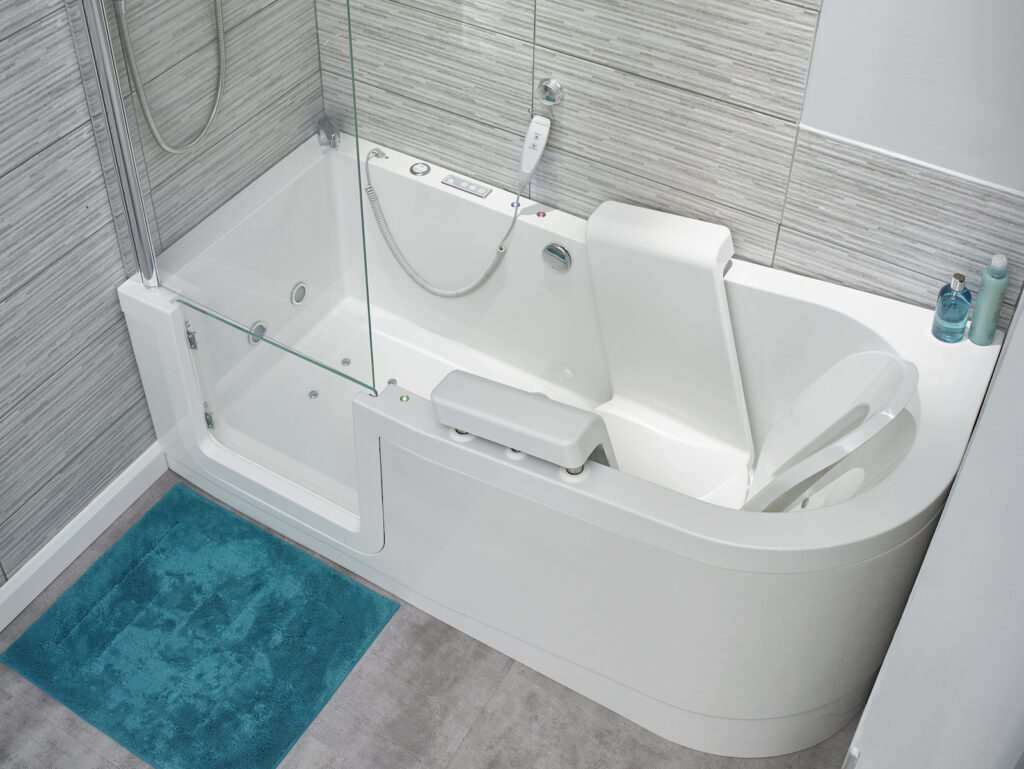

· Bath lifts
A bath lift such as the Hydrolift from EA Mobility is designed to be retrofitted over an existing bath and allows you to sit on the edge of the bath, swing your legs over the edge and then sit in a non-slip sling. The sling then gently lowers you into the water and once you have finished bathing, will raise you to the original level so you can easily exit the bath. Retracting when not in use, the Hydrolift allows others to use the bath in the conventional way. It requires no mains power connection and can be easily and safely operated by the user for independent bathing.
· Walk-in baths
More expensive than a bath lift but offering greater versatility, a walk-in bath features a fully watertight door for you to enter the bath. Once the door is closed, the bath is filled with water and you can enjoy a relaxing soak. Several designs of walk-in baths are available, with all of them having a footprint that is equal to or smaller than a conventional bath. Some models have a water-saving design that allows you to sit in an upright position yet still enjoy being fully immersed. Others let you bathe lying down, and may have an integral bath lift to help you in and out of this position. You can even choose Air Spa body massage, chromotherapy and a Bluetooth sound system for the ultimate bathing experience. If you prefer showering to bathing, a walk-in shower will make your showering experience so much easier and more enjoyable.
· Low-level access showers
Installation of a walk-in shower is easiest with a low-level access shower. This has a step of 60mm or less and is an ideal solution if you are considering replacing a bath with an accessible shower.
· Level access showers
A level access shower is a walk-in shower with a lip of 10mm or less, making it virtually flush with the bathroom floor and reducing the trip risk when your parent enters and leaves the shower. Level access showers are also suitable for unassisted wheelchair access.
· Wet rooms
A wet room is the ultimate walk-in shower, with no shower door to get in your way and no step or lip to potentially cause you to trip up. If your arthritis has confined you to a wheelchair, you will find a wet room invaluable. To create a wet room, the floor is first profiled to allow all water from the showering area to flow to a drainage outlet. The walls and floor are then entirely sealed with a watertight membrane and then the floor and wall coverings are laid on top of the membrane. Drying your body after a bath or shower can also be a challenge with arthritis. While the inexpensive gadgets we mentioned earlier have their place, a body dryer offers much more effective drying with several additional benefits. 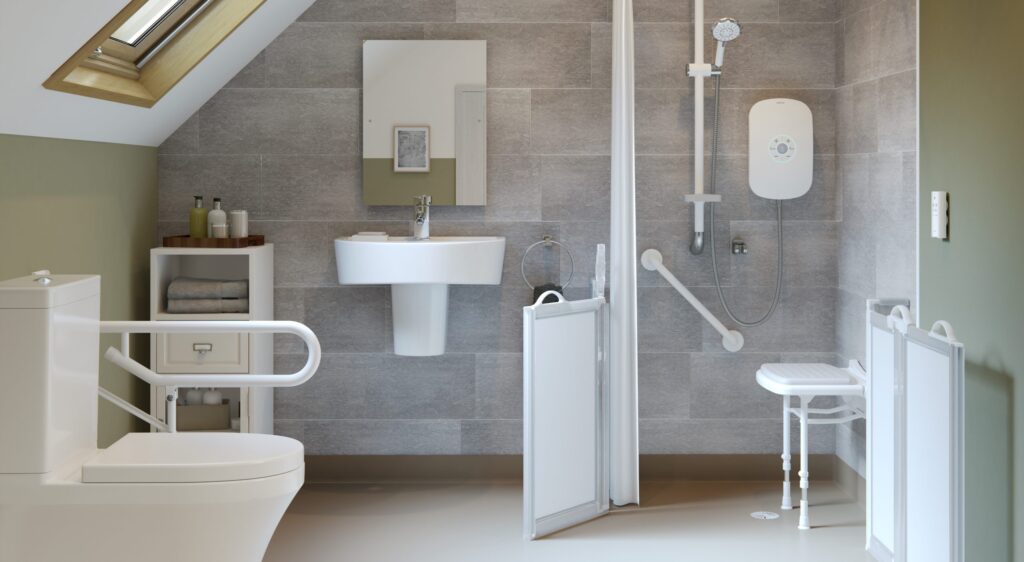

· Body dryers
For anyone with arthritis, gripping a towel while bending and twisting to reach every part of the body can be challenging. A body dryer is an excellent alternative to towels as it offers total body drying to eliminate damp patches that can breed bacteria, leading to sores and infection. A body dryer can be installed unobtrusively in the corner of a shower enclosure or bathroom, where it will also help reduce condensation and steam and prevent the accumulation of limescale and mildew. Another benefit of a body dryer is that it eliminates the need for towels and heated towel rails. The first reduces the amount of washing you need to do and the second – as anyone who has accidentally touched a hot towel rail will confirm – removes a potential burn risk from the bathroom.
Going to the toilet
Installing a grab rail next to the toilet and a raised, comfort-height toilet will help you get on and off the toilet, but that may not be the only challenge you face. Cleaning yourself can be difficult if your fingers lack the strength to firmly hold toilet tissue, while stiffness in your back may prevent you from being able to reach properly.
Smart toilets
A smart toilet replaces toilet tissue with a gentle and hygienic automatic wash/dry cycle, using warm water and warm air for a pleasant and total cleansing experience. It can be entirely activated from a forward-facing sitting position and performs the function of a toilet and bidet in one.
Using the basin
As anyone with arthritis in their hands will know, conventional bathroom wash hand basins aren’t always the easiest to use, but there are changes you can make to your bathroom basin.
Accessible wash basins
An accessible wash hand basin simplifies hand hygiene for arthritis sufferers. Integral hand grips at the front of the basin give support and assurance if the joints and muscles in your hips and legs are weakened or stiff. They are also designed to be accessible to wheelchair users, but even if you don’t use a wheelchair you have plenty of room to pull a chair up to the basin and sit comfortably while you wash your hair, brush your teeth and so on. If you prefer to stand at the basin for simple tasks such as handwashing but sit down for those that take more time, you can even have an accessible wash hand basin with a manually or electrically operated height adjustment. Whatever basin you choose, adding easy lever taps will again help with those arthritic joints in your hands.
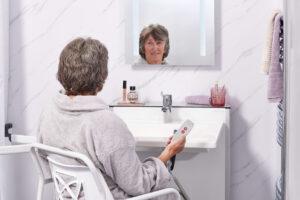

How EA Mobility is making bathing with arthritis easier
As a specialist bathroom adaptation provider, we have many years of experience and a wide range of solutions that can be tailored to your individual needs. Every client’s needs are different, which is why we like to start with a visit from one of our home assessors. This is completely free and without any obligation to use EA Mobility for your bathroom adaptation. It’s also an opportunity for us to get to know you personally and to assess your needs while giving you professional, unbiased and personal advice on how your bathroom can be adapted. We understand the limitations that arthritis can impose on your quality of life and independence and our friendly assessors will treat your enquiry with empathy and respect for your dignity and privacy. We also strive to create pleasant bathroom environments where you can begin and end each day in comfort, using products that are stylish as well as functional. If you choose to use EA Mobility for your bathroom adaptation our designers, fitters, electricians, plumbers and decorators will manage the entire project from concept to completion, working to the highest standards and with minimal disruption to your home and life. If you would like to book a visit from one of our home assessors, please call us on 0800 468 1023 or fill out our online contact form and we will respond promptly.




